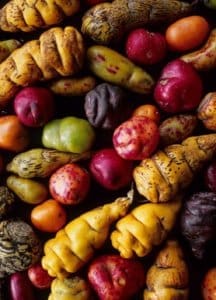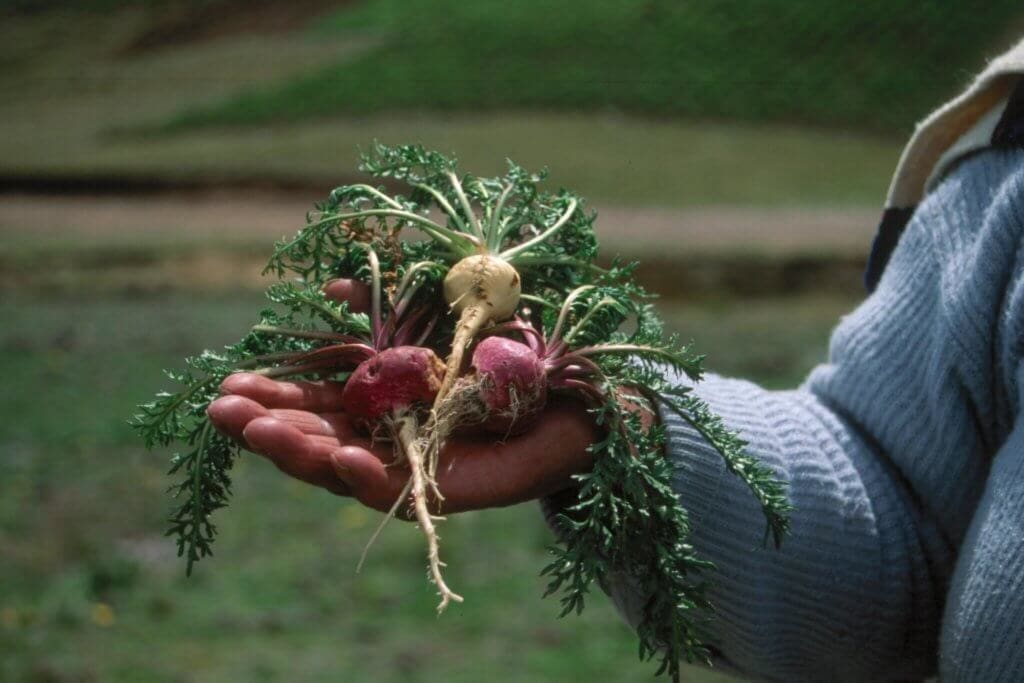 Fresh maca (which has been freshly harvested and is unprepared in any way) is not recommended for consumption. Generally speaking, some people may have an adverse reaction to any kind of raw food, if consumed in large quantities. Raw maca is derived from roots that have been harvested and then sun-dried.
Fresh maca (which has been freshly harvested and is unprepared in any way) is not recommended for consumption. Generally speaking, some people may have an adverse reaction to any kind of raw food, if consumed in large quantities. Raw maca is derived from roots that have been harvested and then sun-dried.
Some sources claim Peruvians never eat raw maca. However, this appears to be a misnomer, as fresh maca is not the same as the raw maca form. While many Peruvians do bake the fresh roots, most of the time they are dried before they are consumed. Even General Mills in Peru, a giant US-based conglomerate, proudly adds raw maca to the porridge pot. Their trustworthy elder statesman, smiling from the famous Quaker Oats label, can now be seen offering maca and oatmeal — at least in South America.
When the root is dried, it increases its digestibility. When it is cured in the sun, more of its nutritious qualities become available to our bodies. Furthermore, the traditional Andean post-harvest practice of drying in the sun actually stimulates the production of the macamides during dessication. A 2015 journal article in Phytochemistry reports:
“This correlation strongly suggests that the hydrolytic processes that accompany open-air drying are responsible for the formation of the precursors of macamides. It must be noted that macamide synthesis is still occurring until the end-point of the drying process at 13% tissue water content.”
Freshly harvested maca that has not been dried does not appear to have macamides at all. According to a journal article in Natural Products and Bioprospecting:
“HPLC analyses show that macamides are absent in fresh undamaged Maca tissues while the hypocotyls dried by traditional Andean post-harvest practices [sun-drying] or by an industrial oven [in a lab setting] contain up to 800 µg g−1 dry weight of macamides.”
Additionally, some may prefer gelatinized maca. Gelatinization does make maca easier to digest. However, the process does eliminate some of the nutrients that are available to the body through consumption of the raw product. At Herbs America, we do offer the root in raw powder form, as well as the gelatinized option.
Maca is a wonderfully nutritious addition to the human diet. It is loaded with minerals and has 18 of the essential amino acids, 20 beneficial fatty acids, and six sterols. As a tasty dried powder, maca is easily added to smoothies, milkshakes, cereals, juices, sauces, and many other yummy foods.

References
Esparza, Eliana, et al. Bioactive Maca (Lepidium meyenii) Alkamides are a Result of Traditional Andean Post-Harvest Drying Practices. Phytochemistry. 2015, August; Volume 116: 1239-1242
Huang YJ, Peng XR, Qiu MH. Progress on the Chemical Constituents Derived from Glucosinolates in Maca (Lepidium meyenii). Nat Prod Bioprospect. 2018;8(6):405–412. doi:10.1007/s13659-018-0185-7
